Nyumba: On board Southern Wind's first hybrid sailing yacht
Southern Wind’s 29-metre Nyumba was built for owners who knew exactly what they wanted: performance cruising with no fuss. The yard’s innovative hybrid system gave them an efficient world-girding sailing yacht with serious green credentials, says Risa Merl
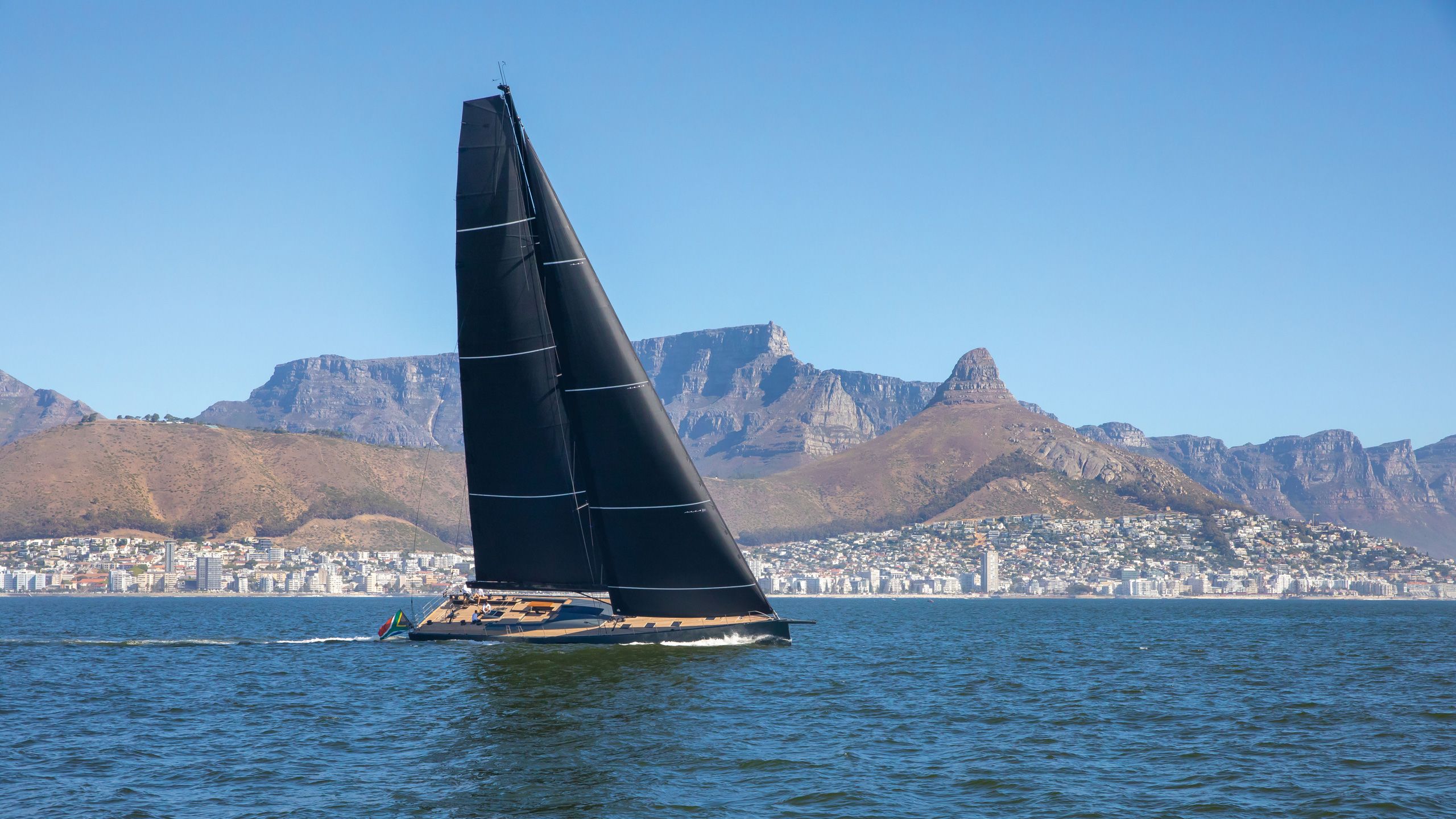
Just off the coast of Cape Town, South Africa, in the shadow of Table Mountain, a glinting, grey-hulled sailing yacht cuts across the water. Nyumba, the latest in Southern Wind Shipyard’s 96 series, is being put to the test before her owners take delivery. On board, the build team, eyes glued to the helm, count out loud excitedly as the numbers climb upwards. They aren’t tracking the yacht’s speed, as might be expected, but a different stat entirely.
As the first Southern Wind yacht to employ a hybrid propulsion system, the figure that’s causing such a flurry of excitement is how many kilowatts of energy the 29-metre is generating as she hurtles along. “It’s a change from trying to get a half-knot faster (during sea trials) to trying to get more kilowatts generated,” says Yann Dabbadie, Southern Wind’s technical manager. Nyumba is the first sailing yacht of less than 30 metres LOA to implement high-voltage energy storage and be powered by a serial hybrid propulsion system.
Nyumba means “home” in Swahili, and the owners wanted comfort and cosiness while exploring the world. In the saloon, the standard SW96 L-shaped sofa to starboard was replaced with a workstation and reading nook
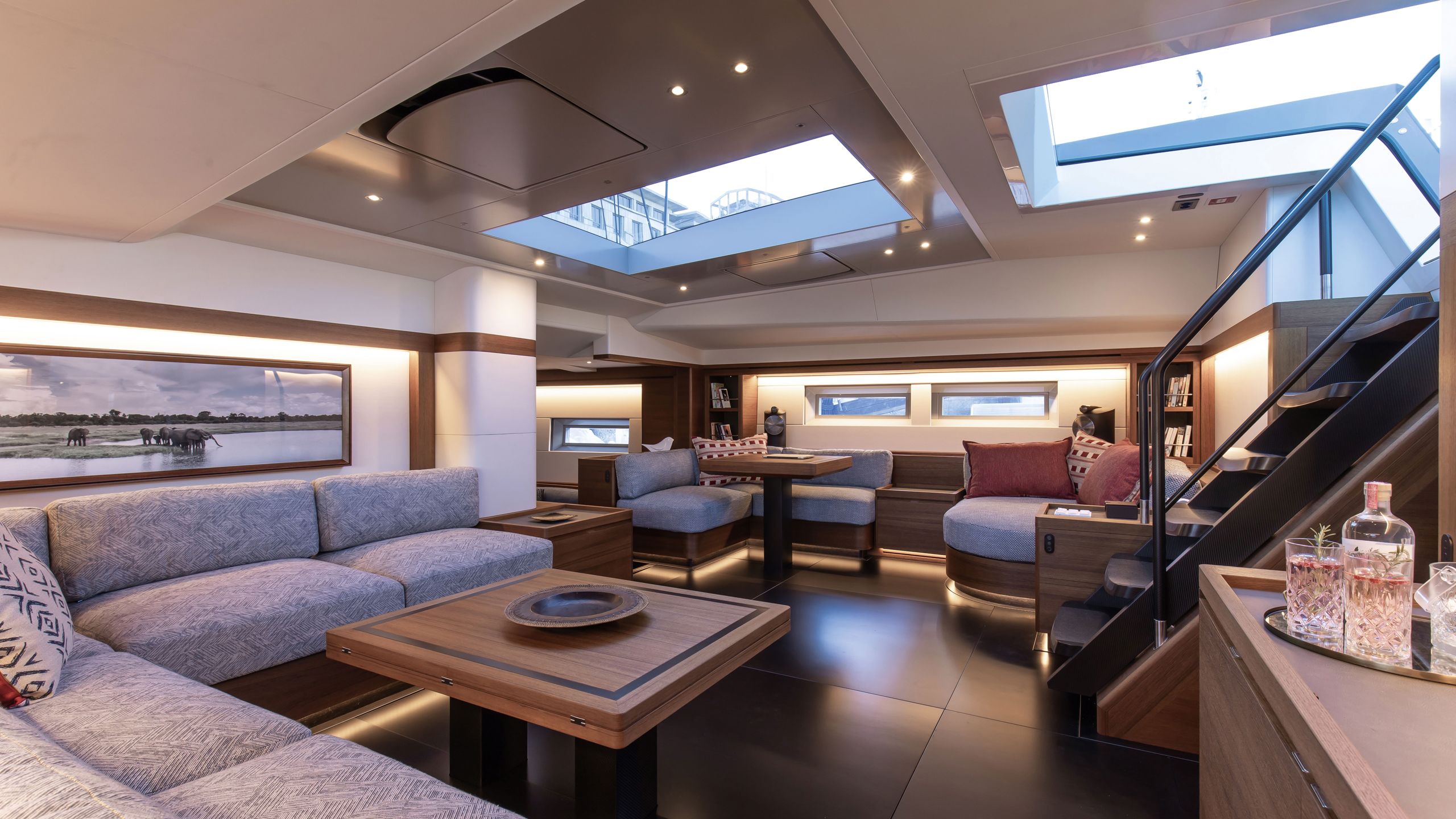
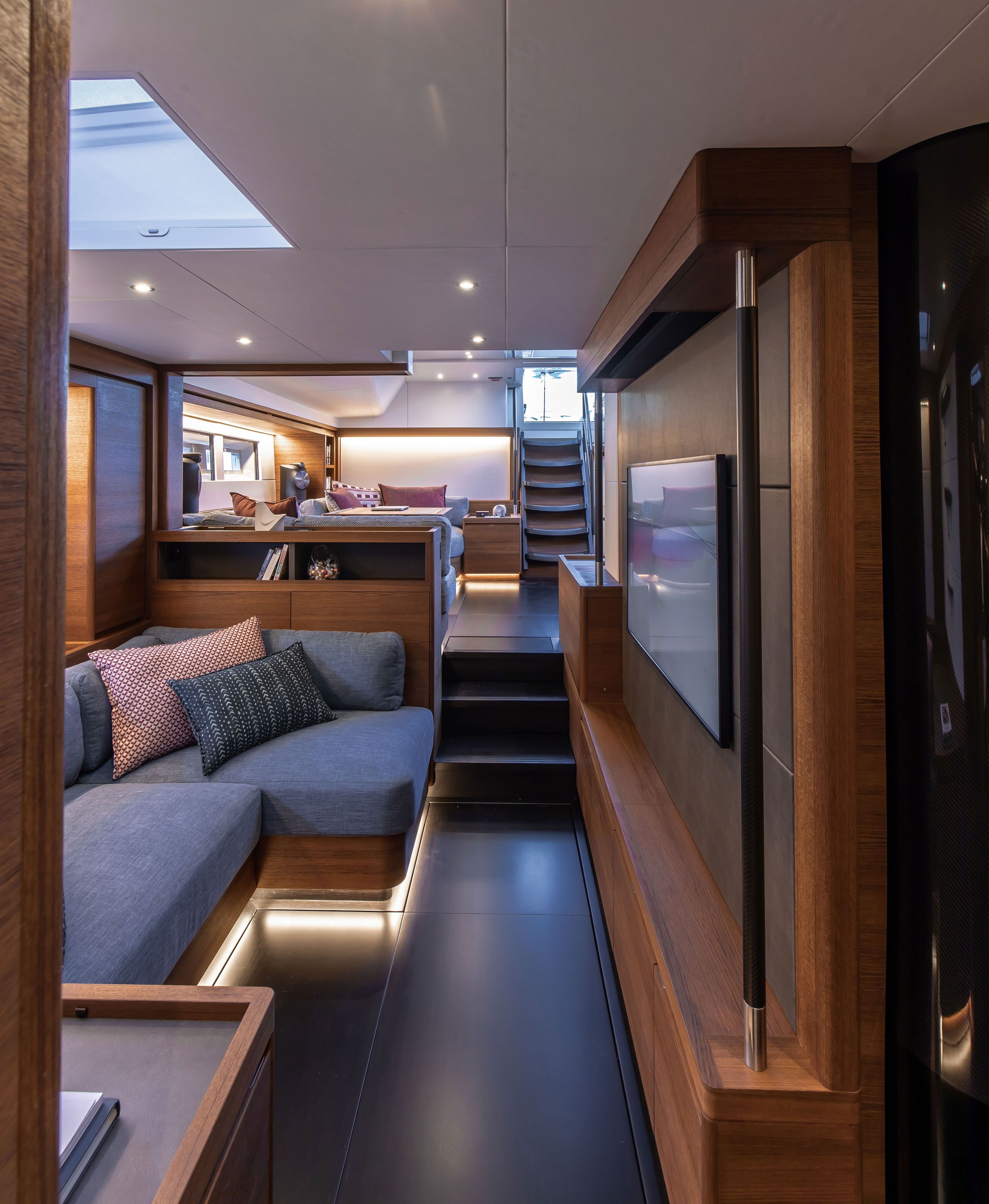
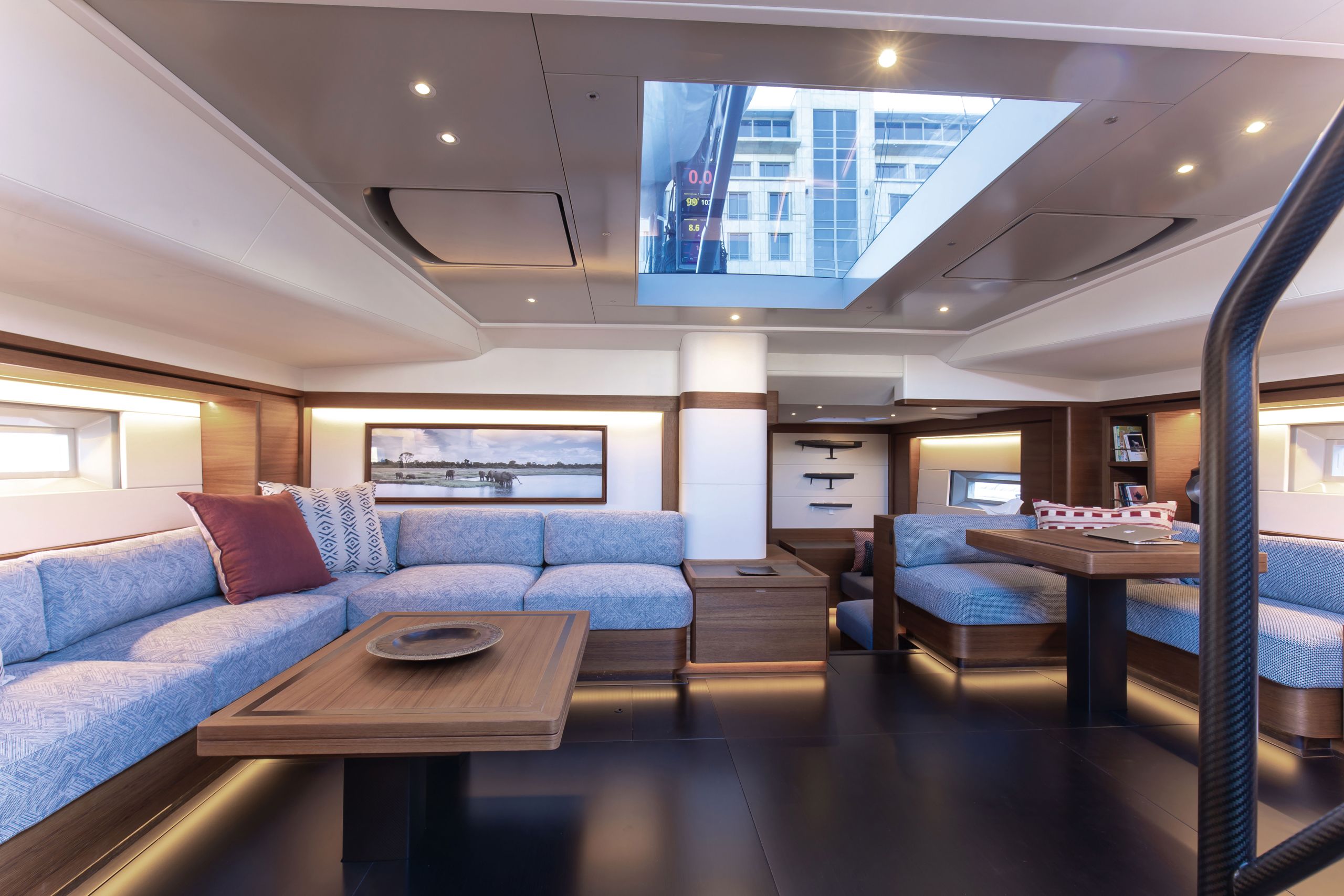

GUILIANO SARGENTINI
GUILIANO SARGENTINI

GUILIANO SARGENTINI
GUILIANO SARGENTINI
Sailing yachts are inherently more eco-friendly than motor yachts, but the addition of hybrid propulsion will extend Nyumba’s zero-emissions operations, easily covering the needs of hotel loads with power generated while under sail. “Ten kilowatts is all that’s needed for the hotel load, so as long as you’re hitting 10 knots of speed, you’re making it,” says Dabbadie.
Nyumba is designed inside and out by Nauta Design, while naval architecture comes from Farr Yacht Design. The owners, husband and wife, are both avid hands-on sailors who were looking for a high-performance cruising yacht that can be sailed around the world with minimal crew. When Southern Wind proposed employing hybrid propulsion, it piqued their interest. “We believe this is the future as a company and are always trying to be ahead of things, and we found synergy with owners who were excited [to try hybrid propulsion] and said, ‘If it’s something new, I want to be the first one,’” says Marco Alberti, Southern Wind Shipyard’s CEO.
The large saloon is brightened by light flooding in from generous skylights. Modern sectional sofas provide plenty of space for lounging
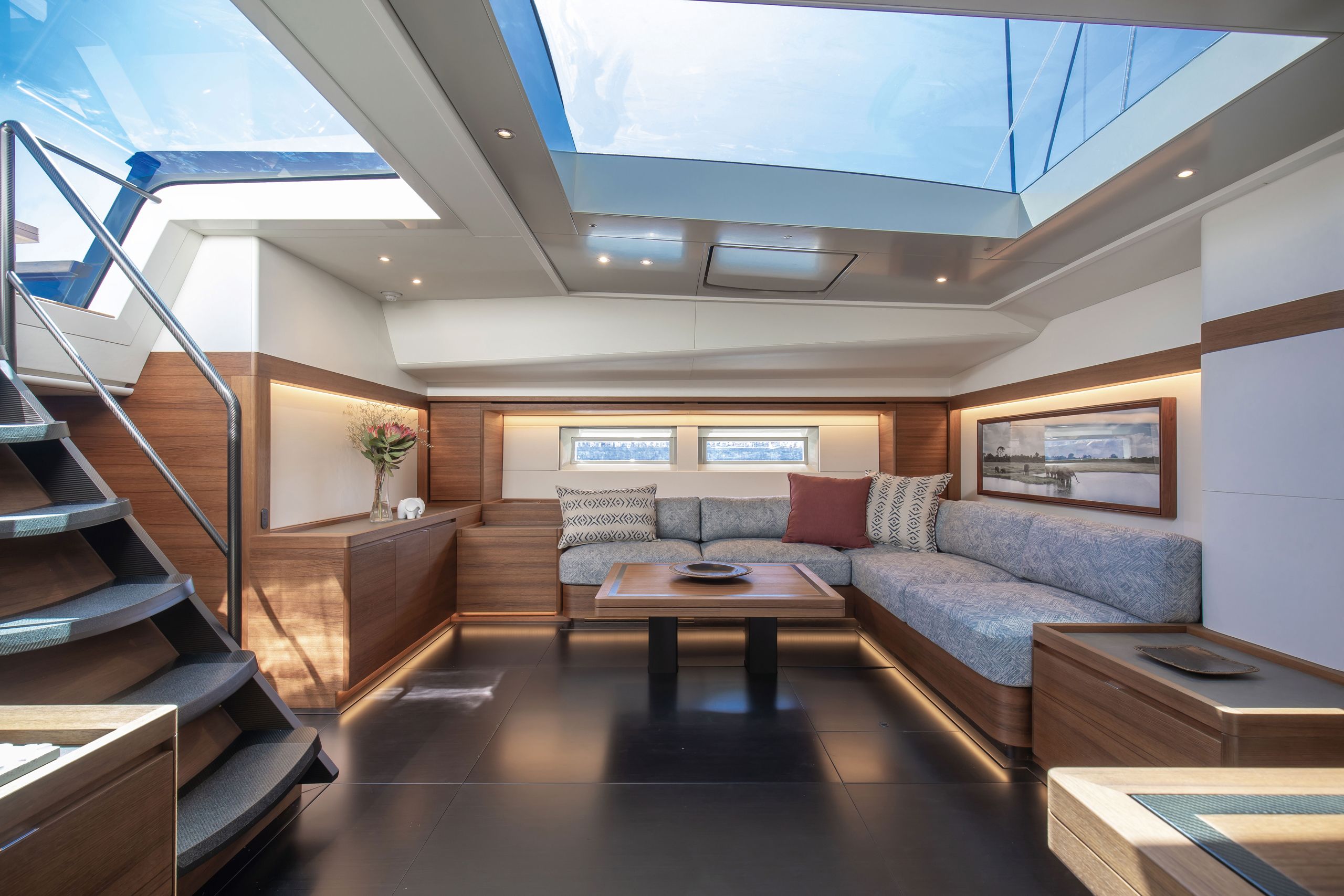
This is the owners’ third sailing yacht, and they had clear ideas about how the family would enjoy the yacht, and what this would mean in terms of the deck plan and interior. “They have a lot of experience and had a big input on how they did and did not want things to run on deck,” says Nyumba’s captain, Nick Burgess, who ran the owners’ previous boat – a 22.5-metre custom sailing yacht – and served as build captain for this bigger yacht.
Southern Wind’s Smart Custom presents a halfway house between full custom and semi custom, allowing the owners to have plenty of input while still benefiting from yard’s tested know-how. “The owners favoured our Smart Custom approach to full custom,” says Andrea Micheli, the builder’s chief commercial officer. “They reaped the benefits of the yard and design team’s experience while enjoying a smoother and more structured decision process.”
Nyumba might be the fourth in the South African shipyard’s 96 series, but she stands out in the looks department as the first SW96 to have a streamlined GT-style deck and coachroof. The GT concept was first introduced by Nauta on the SW105 Taniwha. “Nyumba’s deck is definitely one of the cleanest, most balanced and sportiest we’ve ever designed,” says Massimo Gino, co-founder of Nauta Design. “The owners wanted a sleek, dynamic profile and an uncluttered deck with the equipment ergonomically positioned for ease of use, as well as for guest safety and comfort.”

They opted for a dark grey hull and coachroof. “Their choice highlights the sophisticated simplicity of the exterior design and titanium deck hardware,” says Gino. “There is no cove stripe or waterline stripe and even the anti-fouling paint is the same shade of grey as the hull.”
Stepping on board, the first things you notice are the purity of the styling and form-meets-function detailing. Jib sheets are hidden in an enclosure to keep the deck visually clean and aid in safe operation. The owners also requested shorter sunpads to increase the size of the manoeuvring area. “We pushed the mainsheet traveller as far aft as we could to the end of the boom, also reducing loads to the minimum; it’s now aft of the crew companionway, which is styled to look like a mini version of the coachroof, while the twin helm positions have been brought further forward for better visibility,” says Gino. The helm consoles themselves are mounted on custom-designed supports, sculpted to resemble the shape of a propeller’s hub. Another notable customisation is the extra-large swim platform that is revealed by opening the transom. This 8.9-metre-plus “beach club” sits directly on the water and is accessible from the deck through composite stairs.
The owners sought to push the yacht’s performance capabilities in cruising mode on a daily basis rather than compete in regattas
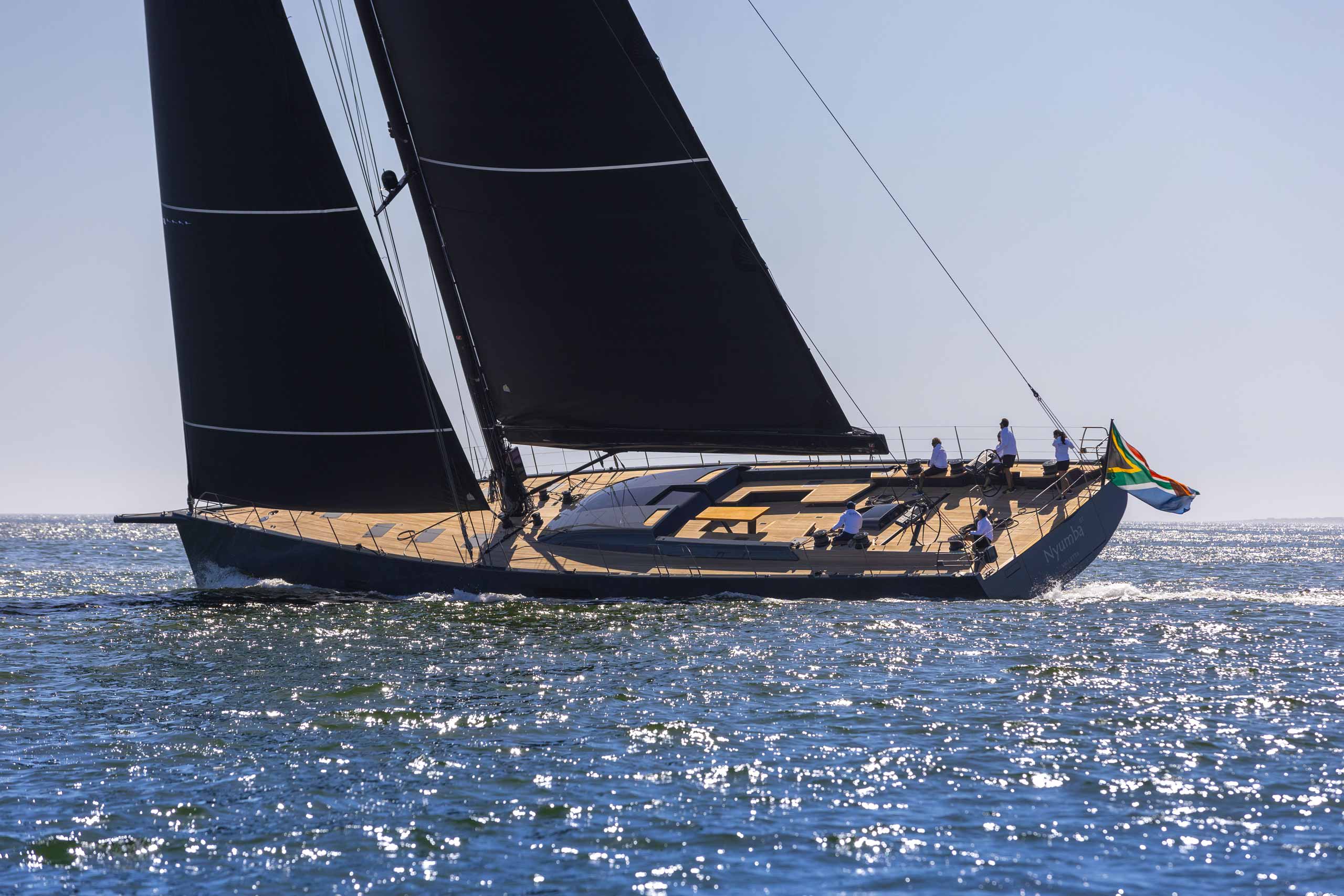
Inside, Nyumba has the classic Southern Wind layout, which places the guest living areas forward, separated from the aft crew area. The decor is welcoming and relaxing, with classic oiled teak veneers and built-in furniture brightened up by African-print fabrics. These vivid materials come from a range of collections by local artists, curated by Dewald Prinsloo of Ebony Design. The art on board plays to the yacht’s African heritage as well, with photographs of animals, such as elephants gathered around a waterhole, by South African photographer
Marc Stanes.
“‘Nyumba’ is a Swahili word for ‘home’ and the owners will be spending a lot of time aboard, so the interior had to be both comfortable and cosy,” says Gino. The saloon is designed to the owners’ requests – the typical SW96 layout with a long L-shaped sofa to starboard was changed into a workstation for him and a reading lounge with a daybed for her. To port, the dining area’s coffee table transforms for mealtimes. Large skylights overhead in the saloon allow light to pour in and brighten up the space, which has dark-wood floorboards. A few steps down, a lower lounge to starboard serves as a relaxation area or cinema with a large television and deep sofa.
The decor is brightened up by African-print fabrics. The art on board plays to the yacht’s African heritage as well, with photographs of animals, such as elephants at a waterhole
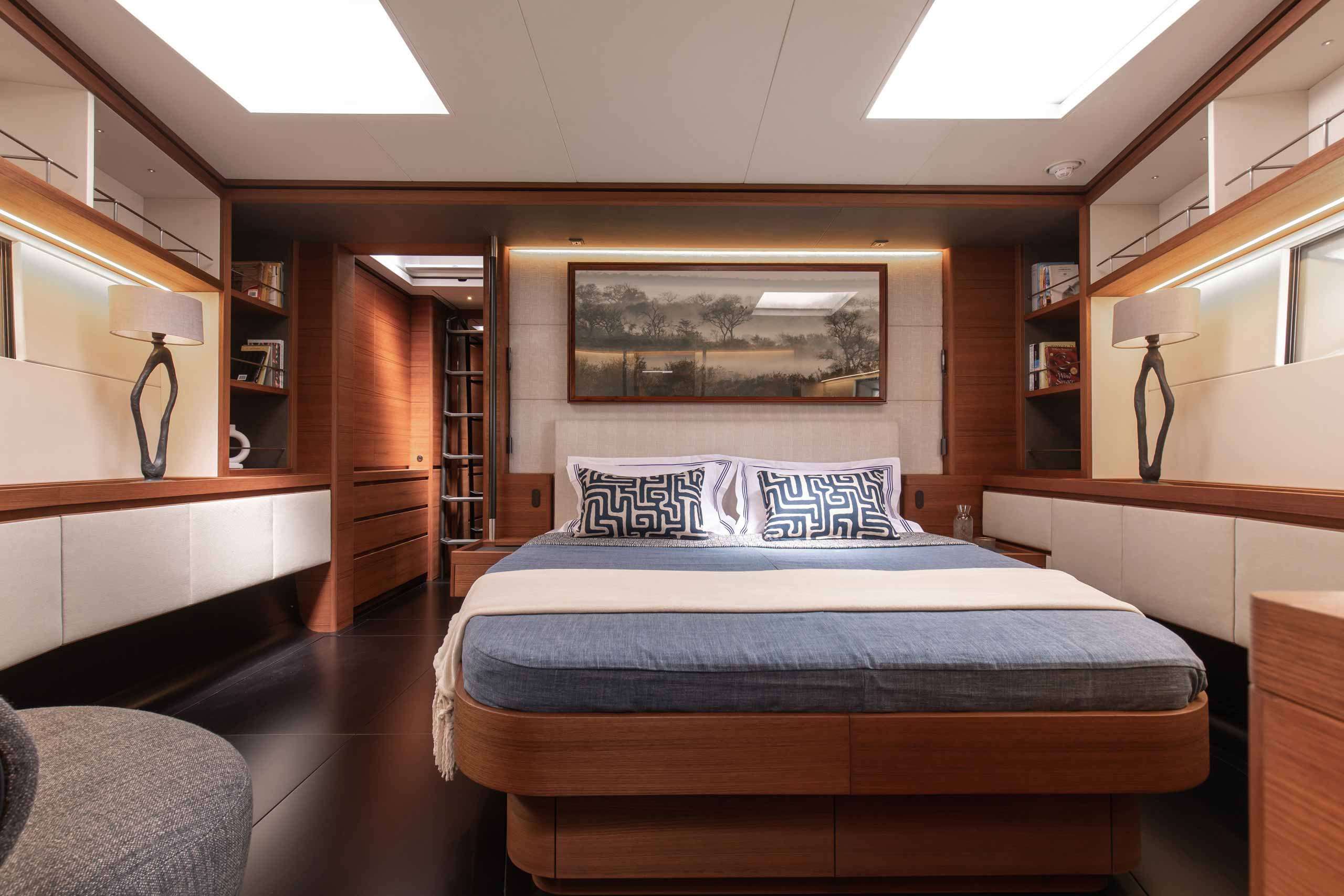
The forward master has an unusual element in the form of a vertical carbon ladder that leads straight from the bedroom up to the deck via a hatch – specifically requested by the owner’s wife. “She likes to get up in the morning and jump straight into the sea for a swim, without having to walk through the corridors or see anyone else,” says Captain Burgess.
The owners are very hands-on when it comes to sailing, he adds. “They are always driving the boat or trimming the sails, even more so her – she drives the boat way more than he will.”
The owners sailed for many years on a smaller full-carbon racer cruiser, so performance was of the utmost importance. They sought to push the yacht’s performance capabilities in cruising mode on a daily basis rather than compete in superyacht regattas. “But,” says Micheli, “if he does want to race one day, he wants to win.”
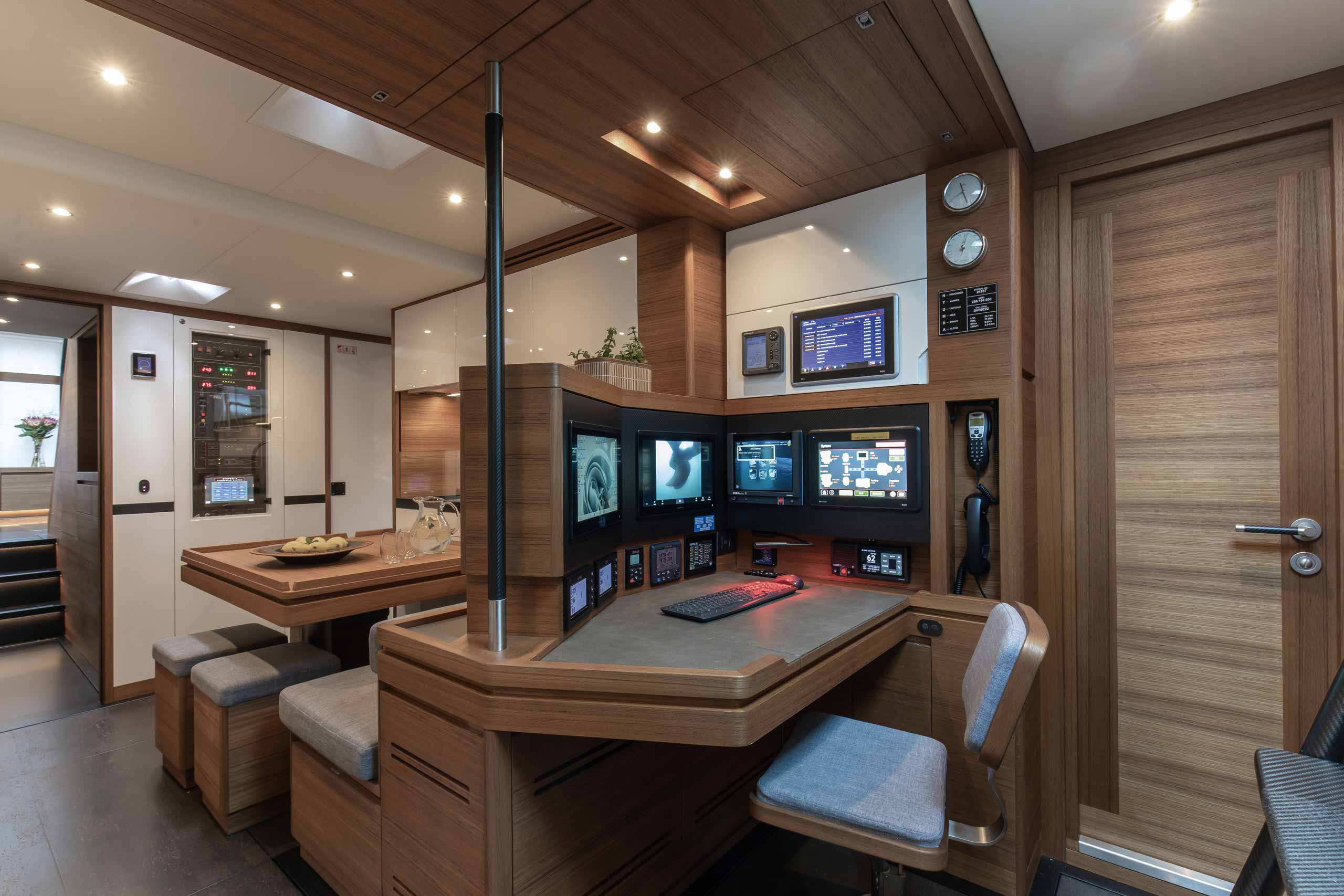
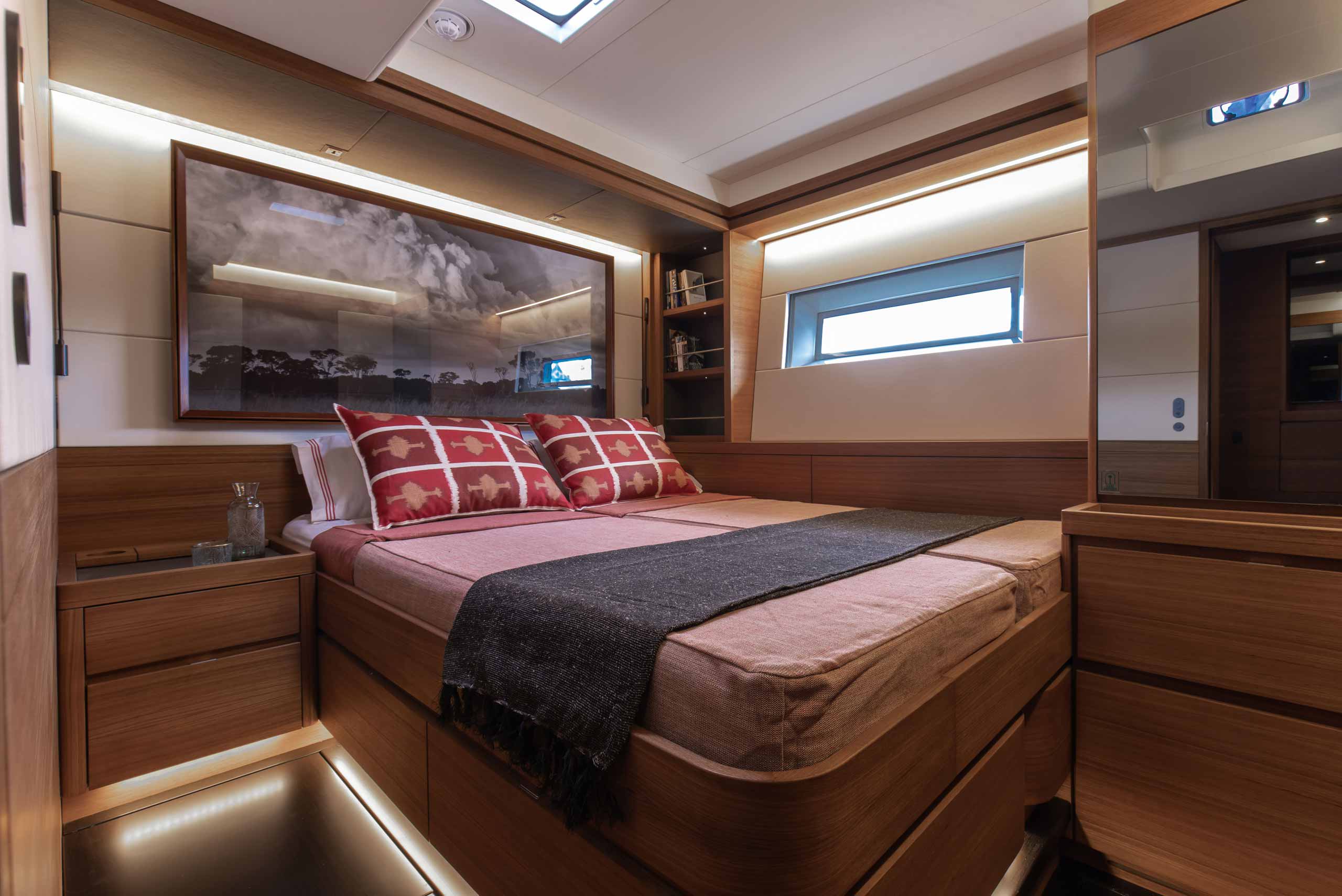
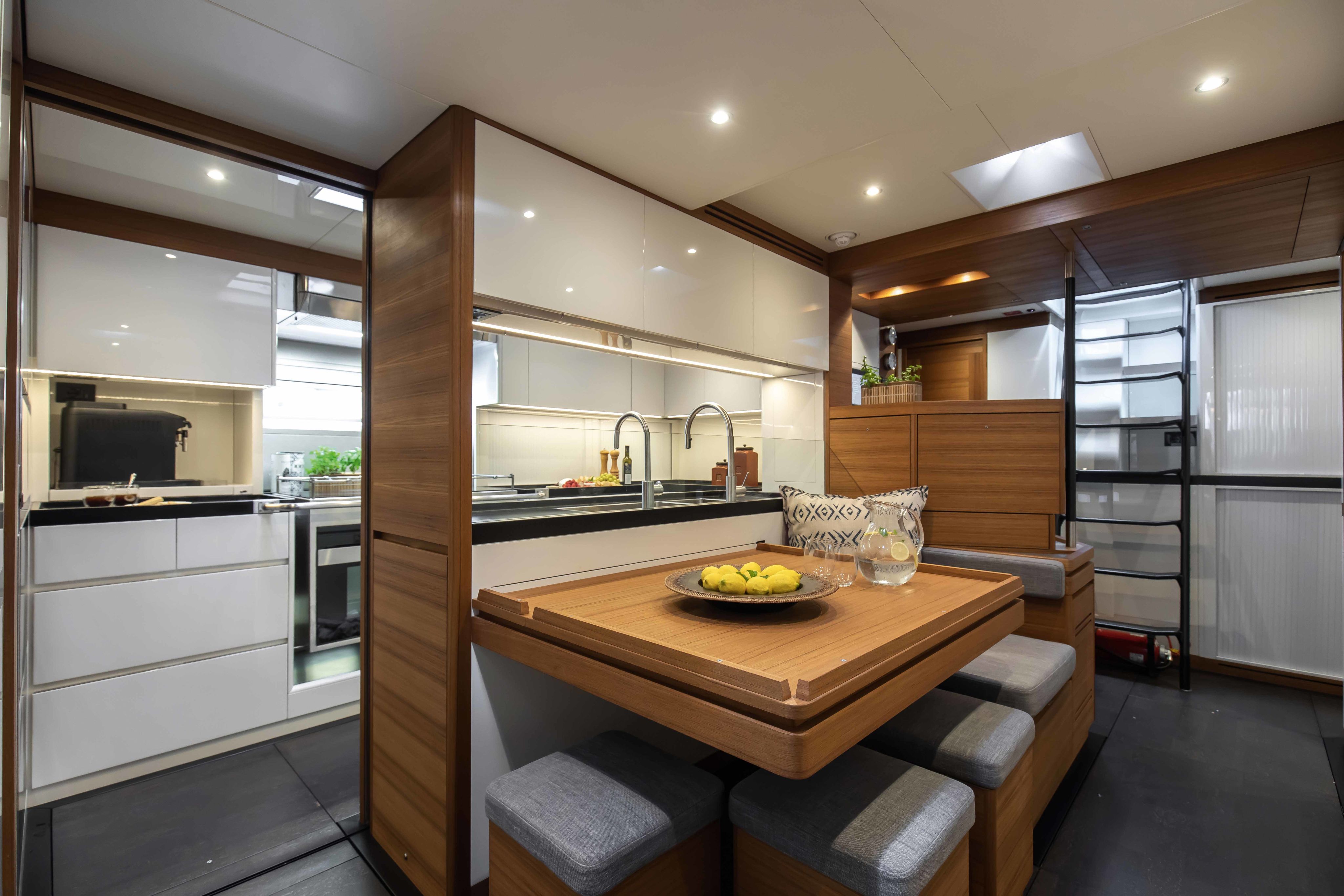

GUILIANO SARGENTINI
GUILIANO SARGENTINI

GUILIANO SARGENTINI
GUILIANO SARGENTINI

GUILIANO SARGENTINI
GUILIANO SARGENTINI
The hull shape of the SW96 series exhibits Farr performance DNA, with a narrow bow, fine waterline entry and an optimised transom shape. “The two key features of Nyumba’s hull that foster performance are minimal wetted surface and a wide, balanced transom shape,” says Jim Schmicker, vice president of Farr Yacht Design. “Minimal wetted surface is achieved using circular sections below the waterline and a narrow overall beam. The transom is wide, low and shaped to maximise the effective length for optimum speed in all conditions. The appendages and rig are placed on the hull to achieve a precise aerodynamic/hydrodynamic balance so handling is easy and drag is minimised.”
The hybrid propulsion system on Nyumba is heavier than the standard configuration. To accommodate this, the hull was lengthened by a 50 centimetres to fine tune the transom immersion. “The underwater drive components are larger for the hybrid system as they are also used as water generators,” says Schmicker. “In order to offset the additional drag and achieve suitable light wind performance, 9.5 per cent more area was added to the mainsail in the form of a square-topped planform compared to the standard triangular shape.”
Nyumba is powered by customised Doyle Sails, with a high-performance sail inventory including a square-top mainsail, structured luff jib, SL staysail and SL J4, while her rigging is by Hall Spars. “Carbon and Technora fibres are used in conjunction with specific resins, which have been selected for their long-term durability and resistance to fatigue,” says Mario Giattino, superyacht sails co-ordinator for Doyle Italy. “All [of Nyumba’s] sails have been designed by senior designer Stefano Nava and Dario Motta and constructed at Doyle Sails Italy utilising the Stratis 1100 CT that provides unmatched flexibility in fibre orientation, placement accuracy and superior lamination. Custom-designed Doyle sails allow for a layout that produces stronger, lighter and faster sails that are smoother when set.”
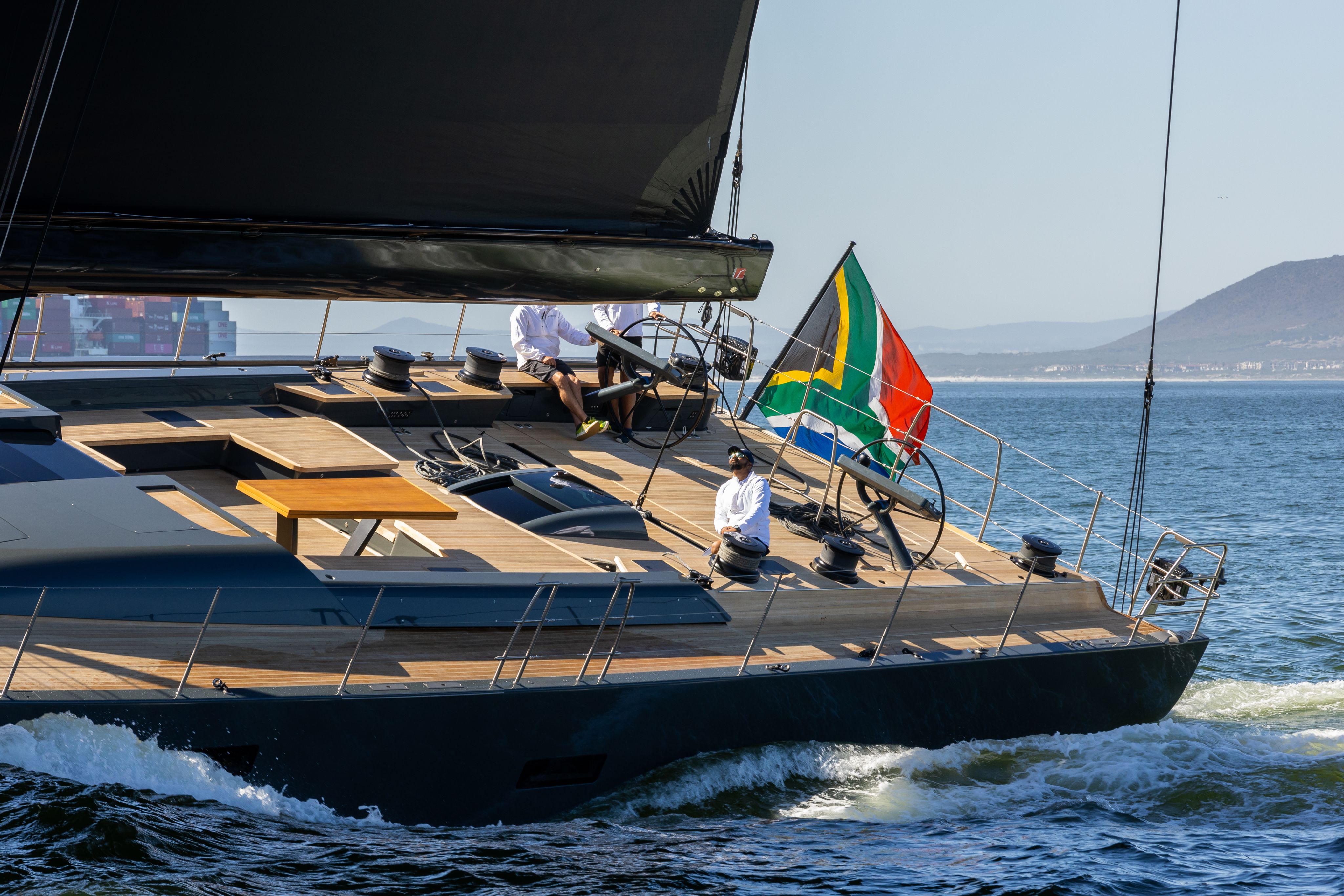
Nyumba’s performance was put to the test from the first sea trials. “The joy of commissioning a yacht in Cape Town is there’s never really a lack of wind,” says Captain Burgess. “On the first day, we had 20 knots of wind. And she performed fantastically from the first moment. We topped out at 15.5 knots, and I think the true speed and performance is still to come.”
When Nyumba shoves off from the dock in Cape Town after delivery, her first voyage will be a shakedown trip to St Helena in the mid South Atlantic (with the owners on board) and then the Cape Verde islands on the way to the Mediterranean. The plan is to cruise the Med this summer, spending a lot of time in Greece and Turkey with the owners on board for weeks at a time. “The boat was built to go around the world, and that’s still the intention,” says Captain Burgess. “The plan is maybe as early as next European winter to head to the Caribbean. We will head west and see how far we get.”
First published in the June 2023 issue of BOAT International. Get this magazine sent straight to your door, or subscribe and never miss an issue.
Large skylights bring the sun into the main saloon below
The crew companionway is styled to resemble the coachroof forward
The transom hides an 8.9m beach platform
A ladder in the master allows the owners to reach the deck without walking through the boat
A second lower lounge has a large screen for movie watching
The crew quarters and galley lie aft

